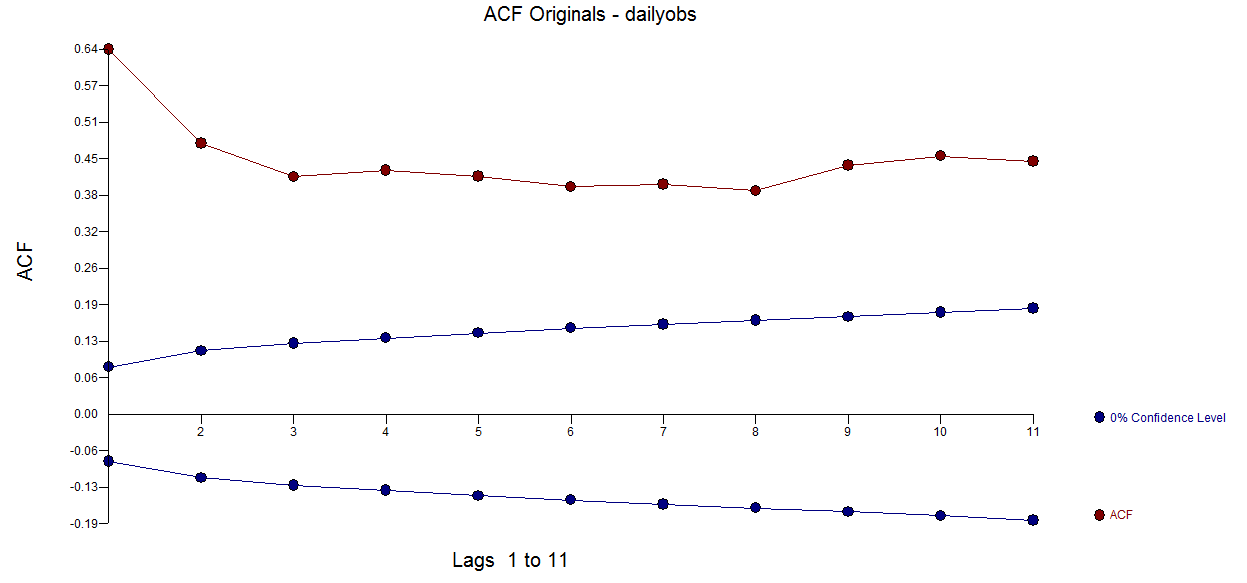Your daily data is here  . This is a cumulative series which will have SIGNIFICANT autocorrelation due to the INDUCED structure as a result of your accumulation. Building an arima model for this is essentially attempting to reverse the user-driven autocorrelation to identify the fixed effects.
. This is a cumulative series which will have SIGNIFICANT autocorrelation due to the INDUCED structure as a result of your accumulation. Building an arima model for this is essentially attempting to reverse the user-driven autocorrelation to identify the fixed effects.
I took your cumulative and first differenced it to obtain what you observed i.e. daily realizations.
The correct thing to do is always analyze the observed daily series which is here  which has a level shift , five pulses and a model (1,0,0) based upon an acf of
which has a level shift , five pulses and a model (1,0,0) based upon an acf of  .
.
The Actual/Fit and Forecast for the observed series is here with forecasts here
with forecasts here 
Now to forecast the cumulative simply take your last value and sequentially add each forecasted value sequentially to 4.6691 your last cumulative. Notice that my forecasts are upwards trending for the resultant cumulative while yours are flat.
The cumulative series is a derived series ( by addition) and will not provide the clarity that you need to analyze the observed daily series with whatever software that you have access to that identifies the arima model in the presence of a level shift and pulses SEE https://cran.r-project.org/web/packages/tsoutliers/tsoutliers.pdf for some guidance on detecting latent deterministic structure.
What you are doing is a typical mistake of transforming the observations i.e. filtering them and then trying to create a model for the artificially summed series.

